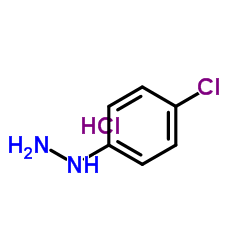| Structure | Name/CAS No. | Articles |
|---|---|---|
 |
4-Chlorophenylhydrazine hydrochloride
CAS:1073-70-7 |
| Structure | Name/CAS No. | Articles |
|---|---|---|
 |
4-Chlorophenylhydrazine hydrochloride
CAS:1073-70-7 |